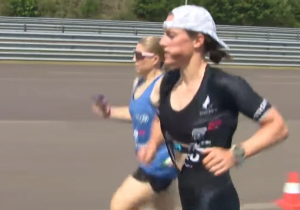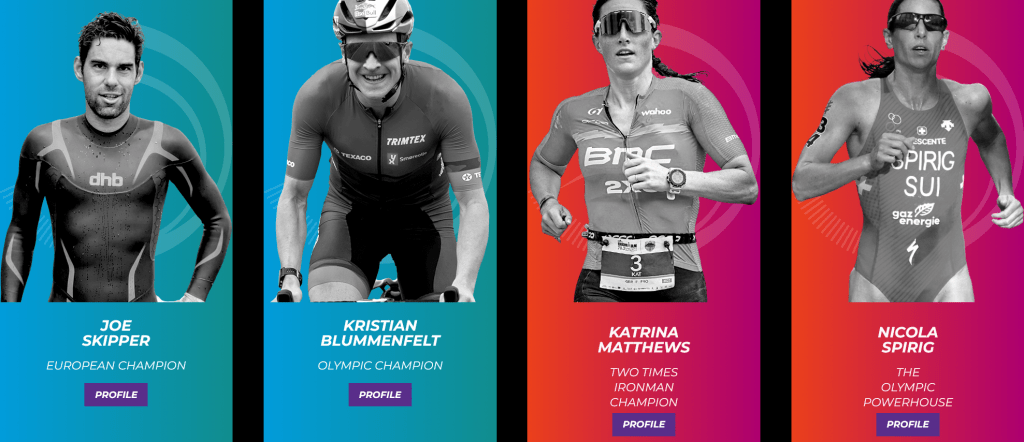Sub7, Sub8 – Is the tech good enough? Are the racers good enough?! Will it be windy?
This Sunday sees the first drafted attempts at Iron-distance world ‘records’ for men and women who target Sub7 and Sub 8 hours respectively.
Those times are ridiculously fast when compared to the best time ever achieved in normal race conditions and they can only be achieved because of the course selection and the draft effect from team pacers. It’s an analogous attempt to Nike’s Sub2 hour marathon project except that technology plays more of a role.
The Challenge – The Basics
The course is the same distance as for an Ironman event: 3.8km swimming, 180km cycling and 42.2km running. In simple terms that’s probably way further than you have ever swum, followed by over a 100-mile cycle and then a marathon.
I’ve done one. It’s extremely demanding. Following a year of dedicated training sometimes with over 20-hours a week, I wouldn’t do one again.
Current Record
There is no current world record as such. Even though the Ironman races are correctly measured, the course profiles vary considerably. I think the current best times are K Blummenfelt 7:21:12 and C Wellington 8:18:13
Importantly the best times achieved so far are set in races where drafting is illegal. Drafting when cycling involves cycling close behind someone else and that can easily mean 10-20% differences in performance – you either go much faster and/or with less effort, so saving your legs for the marathon. Drafting also helps swimming and running but to a much lesser extent.
In normal race conditions, both Sub7 and Sub8 are probably impossible.
Sub7, Sub8 – the athletes
Eliud Kipchoge is possibly the best ever distance runner (wiki: Sub 2 hour marathon). Yet many people have still never heard of him and neither will they have heard of any of the 4 athletes at the start line on Sunday. Perhaps Brits would have heard of Alistair Brownlee, he was signed up for this record attempt but pulled out because of injury.
However many of us in the world of triathlon will know and absolutely respect all 4 of these awesome athletes. Matthews & Skipper are Ironman champions whereas, Spirig & Blummenfelt are Olympic champions, albeit at shorter distances.
- Wiki: Joe Skipper
- Wiki: Kristian Blummenfelt
- Wiki: Nicola Spirig
Wiki: Katrina Matthews
Interestingly, Kristian has gone under 3.5 hours for a Half Ironman race.
Sub7, Sub8 – The Tech Used
The official sponsors include Garmin, FORM Goggles, BMC Bikes and Maurten nutrition. However individual athlete sponsorship deals have gotten in the way and there is quite a mish-mash of kit being used.
Q: If you had to have one thing for the race, what would you have?
A: If it were me, my bit of ‘tech’ would be several pairs of very good cyclists rotating right in front of me for 100+ miles.

You see, the tech will make a difference but it won’t make that much difference from what is used in a normal IronMan race. The world of triathlon tech is much less regulated than, say, professional cycling. In triathlon pretty much anything goes, so the world-leading times listed above have already all been set with optimal tech.
As we see here, the pros can’t even agree on whether to use a road bike or a TT bike
Spirig’s tech includes Deboer wetsuit, Specialized road bike, On Running shoes.
Matthews tech includes an Orca wetsuit, BMC Timemachine 01, DT Swiss ARC 1100 DICUT wheels (800mm front, disc rear), Hutchinson Racing Lab tyres, Wahoo ROAM, 4iiii power meter, Dura-Ace Di2 1×11 (56, 11-25) groupset, Wahoo SpeedPlay pedals, Asics Metaspeed Sky+ running shoes.
Blummenfelt’s tech includes (possibly) Deboer Floh 2.0 wetsuit, a CADEX custom tri bike, Garmin Rally RS200 pedals, and a Quarq power meter (lol! two power meters), SRAM 52/39 Red eTap
Brownlee has pulled out but was planning on using HUUB wetsuit, BMC Time Machine bike, SRAM eTap, Quarq power meter, Wahoo head unit, Schwalbe TT Tubeless tyres, Zip wheels (585 front, Sub 9 Disk rear). Possibly Adizero Adios Pro 2 shoes.
Skipper’s tech (!) according to the official race page so far only includes swim pacers Max Stapley & Gordon Benson and bike pacers Frank Schauer, Gordon Benson and Max Stapley.
Edit: Looking at the tech on the day we see that Spirig’s bike really is not aero optimised….from the helmet to the wheels. OK she wanted to ride a road bike with a more relaxed position but i seems crazy not to make a few extra aero tweaks that don’t affect ride position.

sub7, Sub8 – The Draft Perspective
It seems that on the swim, four teams of two swimmers will pull each of the 4 team captains, presumably with no rotation.
I’m less clear on how the bike works. It’s a lapped course and it seems that two pullers will do 3 laps before rotating out.
With the run, there are plenty of running pacers on hand. It would seem straightforward for two top runners to pace a tired triathlete over a marathon and provide them with wind shielding and a minimal positive draft effect. Just before the marathons start, we hear that the men are only having one run pacer each and the wind has picked up…oh dear.
sub7, Sub8 – The Course & The Weather
Set near Lake Senftenberg in Germany we have a flat course, 100m asl with what looks to be perfect weather conditions.
The 3.8km swim on Lake Senftenberg is approximately a straight line. No messing about turning and hopefully enough trust in the two ahead to believe that they will make the correct sighting decisions to stay on course. Head down and swim.
Transition is followed by a 20k road ride that’s usually downwind to the Lausitzring for 27 laps of the fast, 5.85km Oval. Expect to see an average speed of over 30mph/48kph for the men and over 42kph by Katrina Matthews
The marathon is run on 12 laps of the same track and it all looks pretty flat.
I think we can assume that the transitions involve tiny distances.
The weather conditions also look perfect until later in the morning when it is too hot to be optimal.
So What Technology Will Make a Difference?
The tech that will make the most difference compared to normal will be that used by the pacers. The racers just need to trust and follow those doing the pacing and follow as closely as possible. But they need to be paced accurately and, as professional athletes, the pacers should be able to do that without any tech.
Form swim goggles displaying GPS pace from a Garmin Forerunner wristwatch could help the open water pacing and they are planned to be used. Will slightly better wetsuit tech than last year make any difference when sitting on the hips of two other swimmers in disturbed water? Probably not.
The lead cyclists won’t need power meters with 3kph winds. They’ll just need to know the average speed. They might, however, find it useful to know the power/HR of the guys they’re pulling along to make sure they aren’t being stretched too much but that’s a job for the trackside science teams and team radios.
Fast running shoes are a prerequisite. In my experience, the Nikes are faster but no one seems to be using those. It’s patently obvious that Nike Airfly can support a 2-hour marathon.
I would be interested (but surprised) to see a SuperSapiens patch on any of the racers or even a Muscle Oxygen sensor – fuel and oxygen are both pretty important. But we would both expect all four racers to use top-end nutrition. The main sponsors are Maurten, That should do nicely.
More: Supersapiens Review
Opinion – Will they do it?
The swim will be a tad faster than normal. The run will be the same speed as normal, as any effort saved when biking can only give tiny gains on the run compared to normal. That just leaves the bike leg where massive gains need to be made…and they will be made. (Edit: swim legs were about 5 minutes slower due to currents?!)
The women will both go Sub8 and probably by a considerable margin. Katrina Matthews is an awesome long-distance time trialist in her own right, so with some fast bikers pulling here along, she should be able to hold some massive bike speeds and gain a significant lead before the run, her 40.75kph target is ‘easy’ for her (edit: the ladies did over 46kph and Joe did 55kph). But then Ms Spirig is always going to gain ground on the run, at least for the first half of it. But how much? She will have a much bigger time gap to make up than normal.
Both men should also do the deed. Again it’s a case of a ‘normal’ bike leg effort but the two guys ahead pulling will significantly increase the speed compared to a normal race.
I reckon the two Brits will win. Then again, I’m British and we love underdogs.
Lessons will be learnt from the race and we should see what is broadly possible to achieve in these types of race conditions. Each of Sunday’s new records will be beaten by multiple minutes in the future with sufficiently motivated and resourced teams.





Hi. The current Ironman record is 7:21:12, held by Kristian Blummenfelt. https://gearjunkie.com/endurance/kristian-blummenfelt-ironman-triathlon-world-record
Blummenfelt also won the recent Ironman world championship in St. George, Utah.
https://www.ironman.com/news_article/show/1224621
ty
Anyone could do this
Instead of drafting 7 other TT bikes, just use the right gearing and graft a lorry. Should be able to average 100kph for the bike, if not why even bother drafting.
I’m not quie sure ANYONE could do this! point taken tho.
i think they proved that many top triathletes would have gone sub7/sub8. this leaves open the prospect of knocking another 10 minutes to so from these records plus seeing a real sub7/sub8 in a draft-legal race
paddles and flippers should help more. maybe a downriver swim?